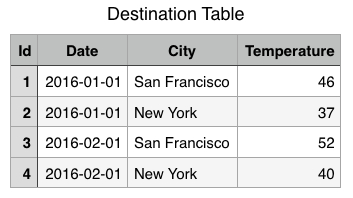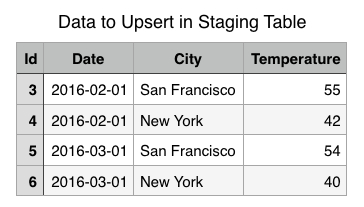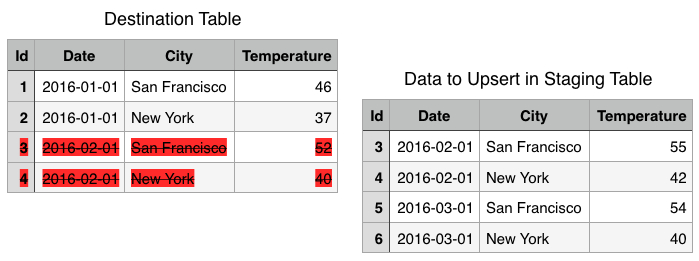什么是 Upsert
"UPSERT" is a DBMS feature that allows a DML statement's author to atomically either insert a row, or on the basis of the row already existing, UPDATE that existing row instead, while safely giving little to no further thought to concurrency. One of those two outcomes must be guaranteed, regardless of concurrent activity, which has been called "the essential property of UPSERT".
简而言之,就是,不存在就插入,存在就更新。
单记录 Upsert
MySQL 有 INSERT...ON DUPLICATE KEY UPDATE 语法,可以实现 Upsert:
INSERT INTO customers (id, first_name, last_name, email) VALUES (30797, 'hooopo1', 'wang', '[email protected]')
ON DUPLICATE KEY UPDATE
first_name = VALUES(first_name), last_name = VALUES(last_name);
PostgreSQL 从 9.5 也有了 INSERT ... ON CONFLICT UPDATE 语法,效果和 MySQL 类似:
INSERT INTO customers (id, first_name, last_name, email) VALUES (30797, 'hooopo1', 'wang', '[email protected]')
ON CONFLICT(id) DO UPDATE
SET first_name = EXCLUDED.first_name, last_name = EXCLUDED.last_name;
批量 Upsert
之前研究 MySQL 里如何插入最快 ,里面提到 LOAD INFILE 方式批量插入,并且 MySQL 的 bulk insert 是支持 REPLACE 语意的,即批量插入的同时还可以 upsert。
LOAD DATA LOCAL INFILE '/Users/hooopo/data/out/product_sales_facts.txt'
REPLACE INTO TABLE product_sale_facts FIELDS TERMINATED BY ',' (`id`,`date_id`,`order_id`,`product_id`,`address_id`,`unit_price`,`purchase_price`,`gross_profit`,`quantity`,`channel_id`,`gift`)
当然 PostgreSQL 也有 Copy 功能,和 MySQL 的 LOAD INFILE 类似。然而,copy 命令不支持 Upsert,这使一些增量 ETL 的工作非常不方便。
不过有一种利用 staging 表的方式实现 bulk upsert,大致步骤如下:
一。目标表

二。把增量数据批量插入中间表
CREATE TABLE IF NOT EXISTS staging LIKE customers INCLUDING DEFAULTS INCLUDING CONSTRAINTS INCLUDING INDEXES;
COPY staging (id, email, first_name, last_name)
FROM STDIN
WITH
DELIMITER ','
NULL '\N'
CSV;

三。把目标表中与 staging 表冲突部分删掉
DELETE FROM customers
USING staging
WHERE customers.id = staging.id

四。把 staging 表批量插入到目标表,因为冲突部分已经删掉,所以这步不会有任何冲突。
INSERT INTO customers (SELECT * FROM staging);

五。把 staging 表清空
TRUNCATE TABLE staging;
上面过程确实很麻烦,如果使用 kiba-plus 的话,只需要简单的 DSL:
destination Kiba::Plus::Destination::PgBulk2, { :connect_url => DEST_URL,
:table_name => "customers",
:truncate => false,
:columns => [:id, :email, :first_name, :last_name],
:incremental => true,
:unique_by => :id
}
相关链接:
- https://wiki.postgresql.org/wiki/UPSERT
- http://www.silota.com/blog/amazon-redshift-upsert-support-staging-table-replace-rows/
- https://hashrocket.com/blog/posts/upsert-records-with-postgresql-9-5
- http://docs.aws.amazon.com/redshift/latest/dg/t_updating-inserting-using-staging-tables-.html
- http://stackoverflow.com/questions/17267417/how-to-upsert-merge-insert-on-duplicate-update-in-postgresql